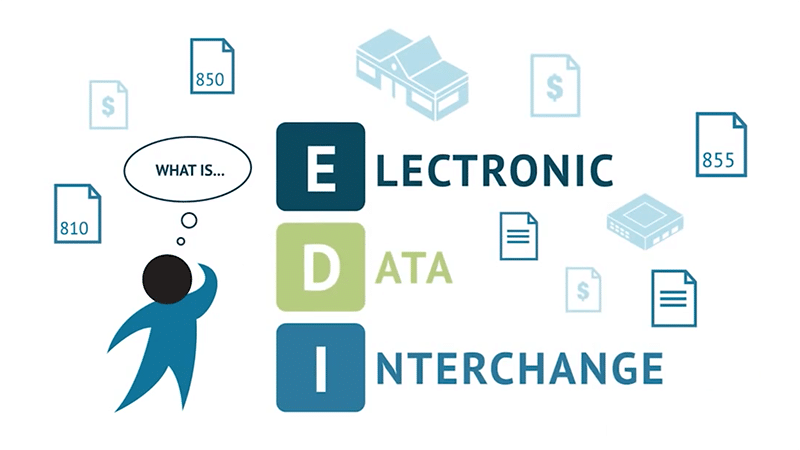
Mar 10, 2021 | Medical Billing Software Blog, RCM
Medical billing technology is always changing, and usually much quicker than one expects. While your current processes may be working for you, there just may be something better available to reduce staff time and increase your revenues. The thing is, technology has made huge strides in the medical billing industry in recent years, offering a number of ways to send and receive data faster, while still protecting sensitive patient information.
So, over the next several posts, we will explore different features technology can offer to increase your efficiency as well as your ‘bottom line‘. We will consider how your Electronic Medical Record (EMR) can communicate with your Practice Management (billing) software, the key features to look for in your Practice Management software, and how it can communicate with other programs, such as Clearinghouses and statement vendors.
This Medical Billing Technology Series will include:
-
- Validation vs. Scrubbing
- Rejection vs. Denial
- Integrating With an EMR
- Integrating With a Clearinghouse
- Basics of ANSI/EDI Reports
- Patient Collection Policy/Credit Card Processing
- Using Templates
- Is Integrated Eligibility Worth It?
- Statement Options
- Selecting a Practice Management System (Ease of Use/Access; Training; and Support)
Now, not every office will benefit from the same “bells and whistles,” and there are so many options out there. It can be overwhelming. Chances are though, your office could benefit from considering some updates, and some may not even cost you at all!
EZClaim suggests that you take a fresh look at the workflows and processes that you have in place today, and start thinking about the tasks that are wasting time or that are causing delays in collecting payments (from both patients and insurance). These insights just may help you create a positive change to your workflow and your revenues!
So, if you need some help getting started, consider working with a consultant. One of EZClaim’s partners, RCM Insight, offers an annual fee schedule review, and during the month of February 2021, they will be offering four practices a FREE fee schedule review. So, visit their CONTACT US page for your chance to win! [ Note: RCM Insight uses EZClaim’s medical billing software for their billing services, so it could be a ‘win-win’ if you are—or will be—using EZClaim’s medical billing solution ].
ABOUT EZCLAIM:
EZClaim is a medical billing and scheduling software company that provides a best-in-class product, with correspondingly exceptional service and support. Combined, they help improve medical billing revenues. To learn more, visit EZClaim’s website, e-mail them, or call them today at 877.650.0904.
[ Contribution: Stephanie Cremeans with RCM Insight ]

Dec 10, 2019 | Electronic Data Interchange (EDI)
Electronic Data Interchange (EDI)
Don’t run off, Electronic Data Interchange or EDI is quite simply a standardized method for businesses to transfer documents electronically. Some typical business uses for EDI are purchase orders, invoices, shipping notices – types of transactions where the pertinent data can be separated from the regular communication related to negotiations, business deals, vendor contracts, etc. Why are we talking about it here? Easy. A set of standards for the healthcare industry has been adopted and make your life easier.
EDI creates efficiency and helps to automate data entry that is often performed manually. Before HIPAA, there were more than 400 different process forms in paper format. Thanks to the research of the Workgroup for Electronic Data Interchange (WEDI) to explore ways to control skyrocketing healthcare costs and patient privacy protections and the subsequent enactment of HIPAA, EDI is available for use in the healthcare landscape.
Just like EDI used in business, Healthcare EDI functions by exchanging information via transaction sets created as standards by organizations like the American National Standards Institute (ANSI). When HIPAA-covered healthcare providers electronically exchange any of the information covered in the list below, the transaction requires the use of adopted standards.
- Claims and encounters information
- Payment and remittance advice
- Claims status
- Eligibility
- Enrollment and disenrollment
- Referrals and authorizations
- Coordination of benefits
- Premium payments
Why is this important? – Efficiencies created in the entry and transference of data reduce errors, saves time and, in turn, saves money. These efficiencies have been adopted for the healthcare industry as they apply so readily to patient and claims data, eligibility, and security.
The EDI Benefits
- Standardization: The elimination of proprietary formats creates consistency, reduces errors and the need for translation.
- Efficiency: Data does not require manual entry. This reduces errors and speeds up the process as it becomes more automated.
- Accuracy: Automated data entry means a reduction of errors, which translates to a savings of both time and money.
- Cost savings: Digital transactions reduce paper usage, storage solutions and time used for manually completing paperwork.
- Greater security: Since only authorized parties can access the data, patient data is better protected and the risks of HIPAA violations are significantly decreased.
HIPAA Compliance – Healthcare EDI transactions are more secure than paper methods of transmitting information. Only authorized users have access to transactions, which is in keeping with healthcare data management practices. That being the case, EDI helps to enable secure data transmissions that comply as HIPAA mandates.
So, why isn’t everybody using EDI? – The use of EDI for data entry and transfer requires both parties to be technologically equipped to handle the transaction. For many smaller businesses, these initial costs can be prohibitive. In many instances, the standards to use between provider and payers are not defined or agreed upon; this results in paper documents being used a fallback.
Looking forward – In addition to the advancements in mobile and smartphones, we now have many types of wearable tech that can be used to track all types of health data. The advancements of mobile EDI can empower patients and practitioners alike to not only ease the portability of patient data, but also mobilize patient health information, track health trends, diagnose potential or emerging health issues, and simplify billing. While technology marches ahead, we will all need to keep in mind the methods for enabling data transfer and keeping compliant for security, safety, and privacy.
EZClaim Premier can generate, parse and display ANSI Healthcare EDI transaction sets as well as clearinghouse formats. This means you are ready to start processing claims using HIPAA-compliant EDI methodology right away with the end-to-end simplicity, compliance, and the peace of mind that comes with ease of data entry, assurance of data free from errors to produce clean claims and, with that, fewer rejections. We continually update our software to keep pace with any changes that may occur in the EDI space.
You can learn more about the Healthcare EDI standards by visiting the Centers for Medicare & Medicaid Services.
Ready to simplify your life? Take EZClaim Premier for a spin for 30 days.



